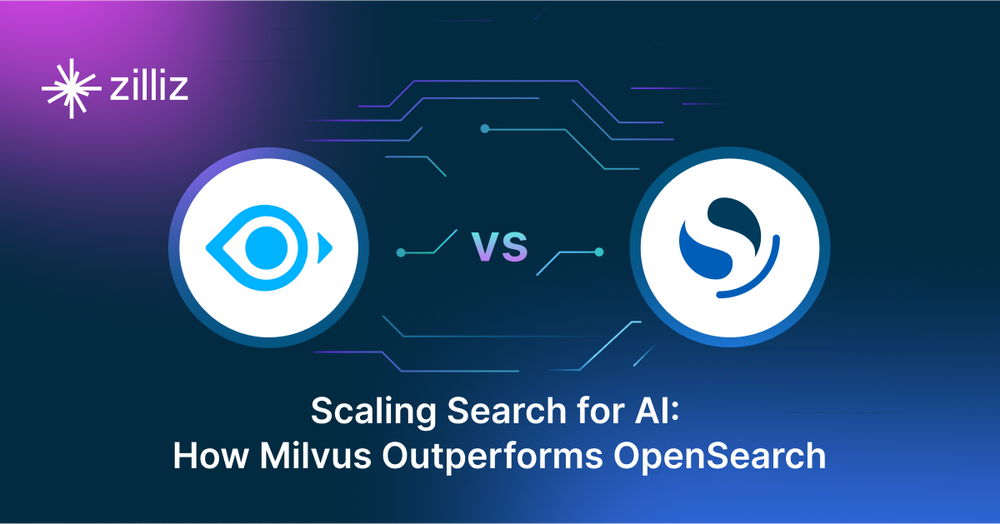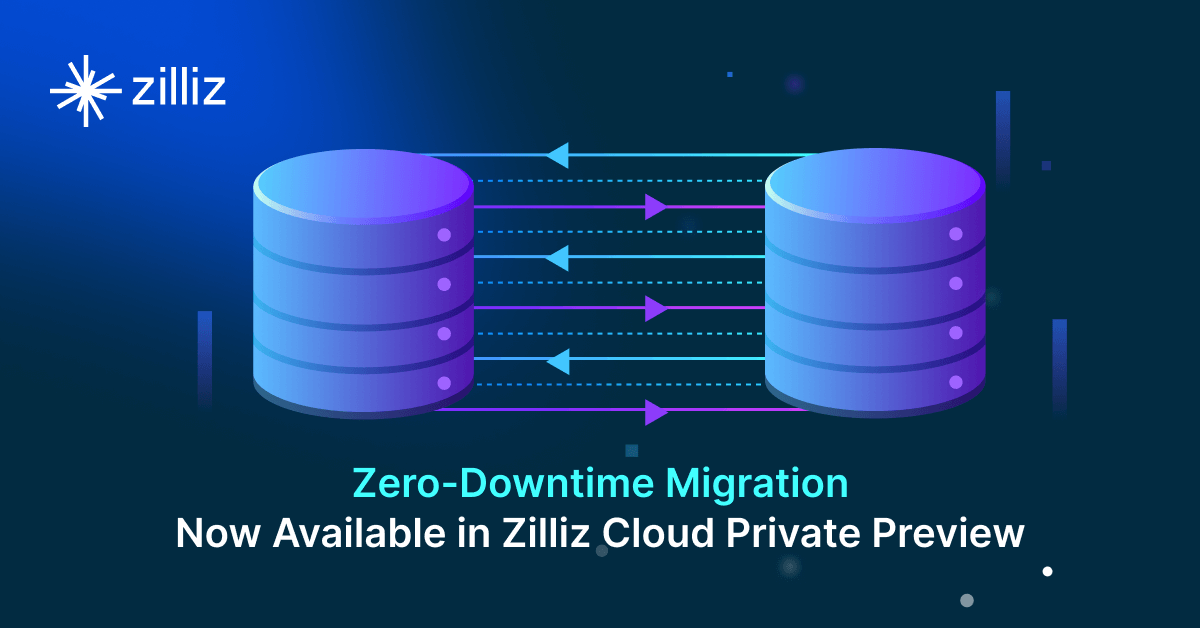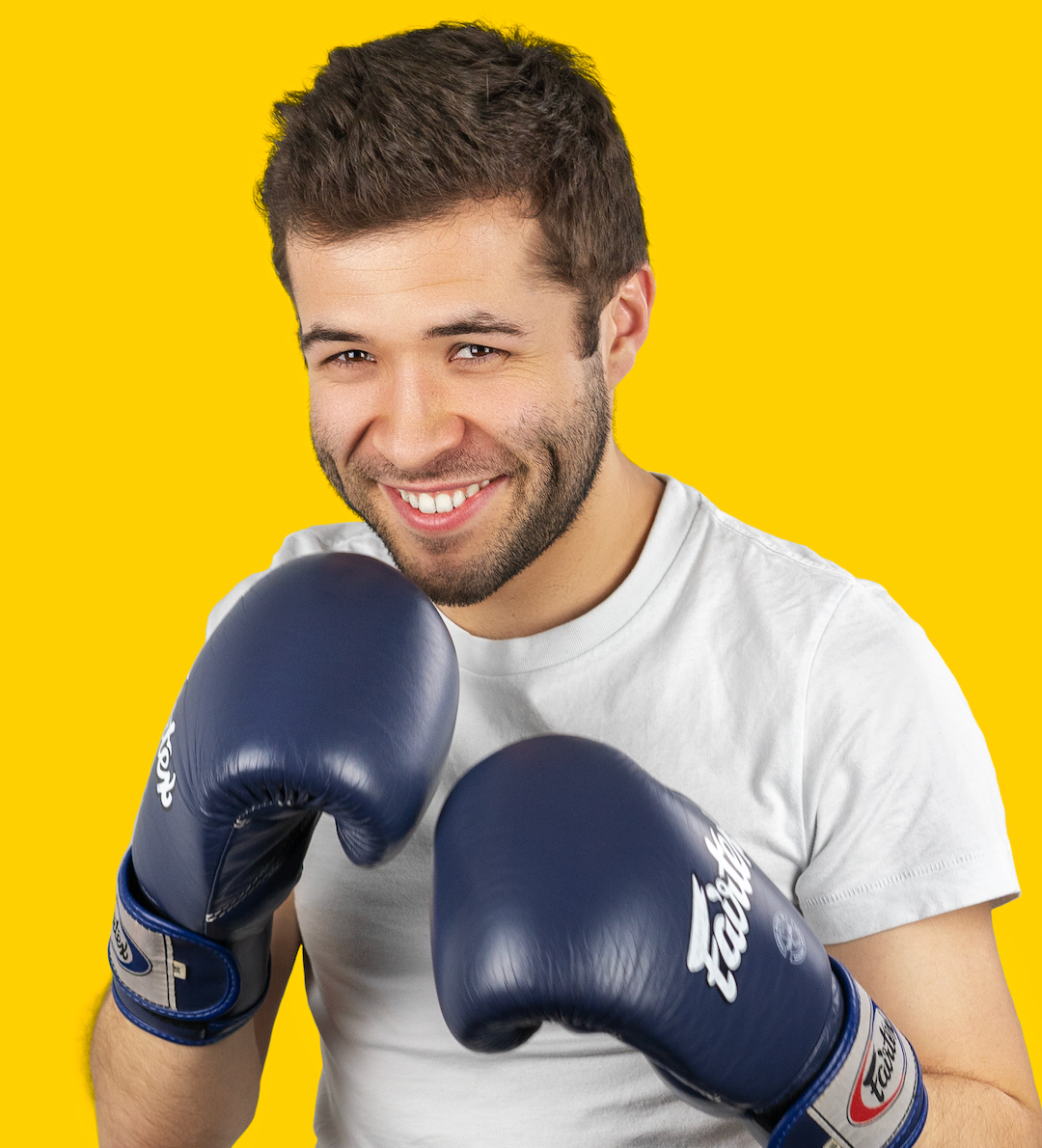Scaling Search for AI: How Milvus Outperforms OpenSearch

Search is rapidly evolving, with vector databases like Milvus and vector search playing a pivotal role in this transformation. While OpenSearch has long been a popular choice for traditional search and analytics, it primarily focuses on keyword-based and structured searches. In contrast, Milvus is designed specifically for AI-driven applications that rely on vector search, allowing for fast, scalable similarity searches across high-dimensional data like embeddings from text, images, or multimedia content.
In this post, we’ll explore how Milvus not only matches OpenSearch in key areas such as speed and scalability but also surpasses it with its specialized capabilities in vector search. With all these capabilities integrated, Milvus offers a unified solution that minimizes the need for multiple databases, simplifying and optimizing the infrastructure for modern AI applications.
What is OpenSearch?
OpenSearch is an open-source search and analytics engine originally derived from Elasticsearch. It is designed primarily for full-text search and log analytics, with additional capabilities for vector search as an extension**. Built on distributed architecture, OpenSearch is scalable, offering real-time search and analytics for structured and unstructured data. It supports a powerful query DSL (Domain Specific Language) and includes machine learning features for advanced analytics. At its core, OpenSearch uses inverted indices, a technology that facilitates efficient full-text searches by mapping terms to document locations. Its vector search functionality builds on this foundation, enabling similarity searches on high-dimensional data, such as text and multimedia embeddings.
What is Milvus?
Milvus is an open-source vector database designed for scalable and high-performance vector search, specifically tailored for AI and large-scale data applications. It efficiently handles and searches billion-scale high-dimensional vectors, making it an excellent choice for AI-powered systems such as retrieval-augmented generation (RAG), image and video search, and recommendation engines.
Beyond vector search, Milvus offers a wide range of search functionalities, including traditional full-text search, scalar filtering, hybrid search, and multimodal search capabilities. This comprehensive feature set allows Milvus to serve diverse search needs, making it a versatile and scalable platform for AI-driven and data-intensive applications.
Vector Search Excellence
- Milvus: Purpose-built for vector search, supporting multiple indexing methods like HNSW, IVF_FLAT, DiskANN, GPU-based CAGRA, and more. This flexibility allows users to balance speed, accuracy, and resource efficiency based on their specific needs, whether building a RAG system or traditional machine learning applications.
- OpenSearch: Offers basic vector search capabilities but lacks Milvus's extensive range of indexing options.
Traditional Search Capabilities
But wait, there is more! Milvus isn't just about vectors. It's also good at:
- Keyword Search - allowing you to perform traditional text searches similarly to OpenSearch.
- Advanced filtering – so you can search results across specific scalar fields, making it even faster to run your vector search.
- Prefix, suffix, and infix search – giving you more precise control over search queries.
This means you can consolidate both vector and traditional search operations into one system, simplifying your tech stack! ✨
The Power of Hybrid Search
Here's where things get interesting. Milvus goes beyond pure vector search by integrating traditional and vector search capabilities. This hybrid approach allows for more nuanced, context-aware queries that combine keyword-based and similarity-based searches. By leveraging the strengths of both methods, Milvus provides more accurate and relevant results, enhancing user experience and delivering better outcomes for applications that require complex data retrieval and analysis.
Scalability and Performance
As seen lately in the AI world, scalability isn't just nice to have – it's a must. Milvus, having been built from the ground up with a distributed system in mind, allows you to run at scale. Whether you're dealing with millions or billions of data points, Milvus can scale horizontally to meet your needs. Plus, with optimizations for both CPU and GPU, you can use the hardware that best fits your needs and budget.
Migrating from OpenSearch to Milvus: A Practical Example
Scenario: Imagine a company with a large internal knowledge base containing documents about its products, services, and procedures. They want to make this information interactive, so they decide to build a RAG application to effectively access and interact with their data.
Proof of Concept (PoC): The engineering team initially implements semantic search using OpenSearch as the engine. This PoC demonstrates promising results, allowing users to retrieve relevant information based on their natural language queries.
Limitations Arise: While the PoC demonstrates promising results, user feedback reveals that search accuracy starts to degrade as:
- Ambiguity in queries increases, leading to irrelevant or vague responses.
- The knowledge base grows in size and complexity, pushing OpenSearch's scalability limits for Vector Search.
Milvus Enhancements for the RAG Application:
To address the identified limitations and improve user experience, the engineering team decided to integrate Milvus into their RAG application:
- Hybrid Search: Milvus enables the integration of hybrid search with improved contextual awareness by using keywords search alongside semantic meaning.
- Scalability: Milvus' distributed architecture allows the RAG application to handle the growing knowledge base effortlessly while maintaining optimal search performance.
Results: By replacing OpenSearch with Milvus in their RAG application, the company sees a significant improvement in answer relevance and user satisfaction. Employees can now quickly find the information they need, leading to increased productivity and better decision-making across various departments.
Conclusion
While OpenSearch remains a robust, versatile solution for many search and analytics needs, Milvus emerges as a compelling alternative, especially for organizations focused on AI and machine learning applications.
Milvus not only matches many of OpenSearch's traditional search capabilities but also excels in vector operations, offering a unique blend of features that cater to the evolving needs of modern data-driven applications.
As we continue to push the boundaries of AI and big data, tools like Milvus that bridge traditional and cutting-edge technologies become increasingly valuable. Whether you’re a startup developing an AI-powered solution or an enterprise looking to upgrade your search infrastructure, Milvus delivers a powerful combination of capabilities designed to meet these demands efficiently.
We'd Love to Hear What Your Think!
If you like this blog post, we’d really appreciate it if you could give us a star on GitHub! You’re also welcome to join our Milvus community on Discord to share your experiences. If you're interested in learning more, check out our Bootcamp repository on GitHub or our notebooks for examples of how to build RAG apps with Milvus.
- What is OpenSearch?
- What is Milvus?
- Migrating from OpenSearch to Milvus: A Practical Example
- Conclusion
- We'd Love to Hear What Your Think!
Content
Start Free, Scale Easily
Try the fully-managed vector database built for your GenAI applications.
Try Zilliz Cloud for FreeKeep Reading

Announcing the General Availability of Zilliz Cloud BYOC on Google Cloud Platform
Zilliz Cloud BYOC on GCP offers enterprise vector search with full data sovereignty and seamless integration.

Zero-Downtime Migration Now Available in Zilliz Cloud Private Preview
Zero-Downtime Migration enables seamless cluster-to-cluster migrations within Zilliz Cloud while maintaining full service availability.

Beyond PGVector: When Your Vector Database Needs a Formula 1 Upgrade
This blog explores why Postgres, with its vector search add-on, pgvector, works well for smaller projects and simpler use cases but reaches its limits for large-scale vector search.
